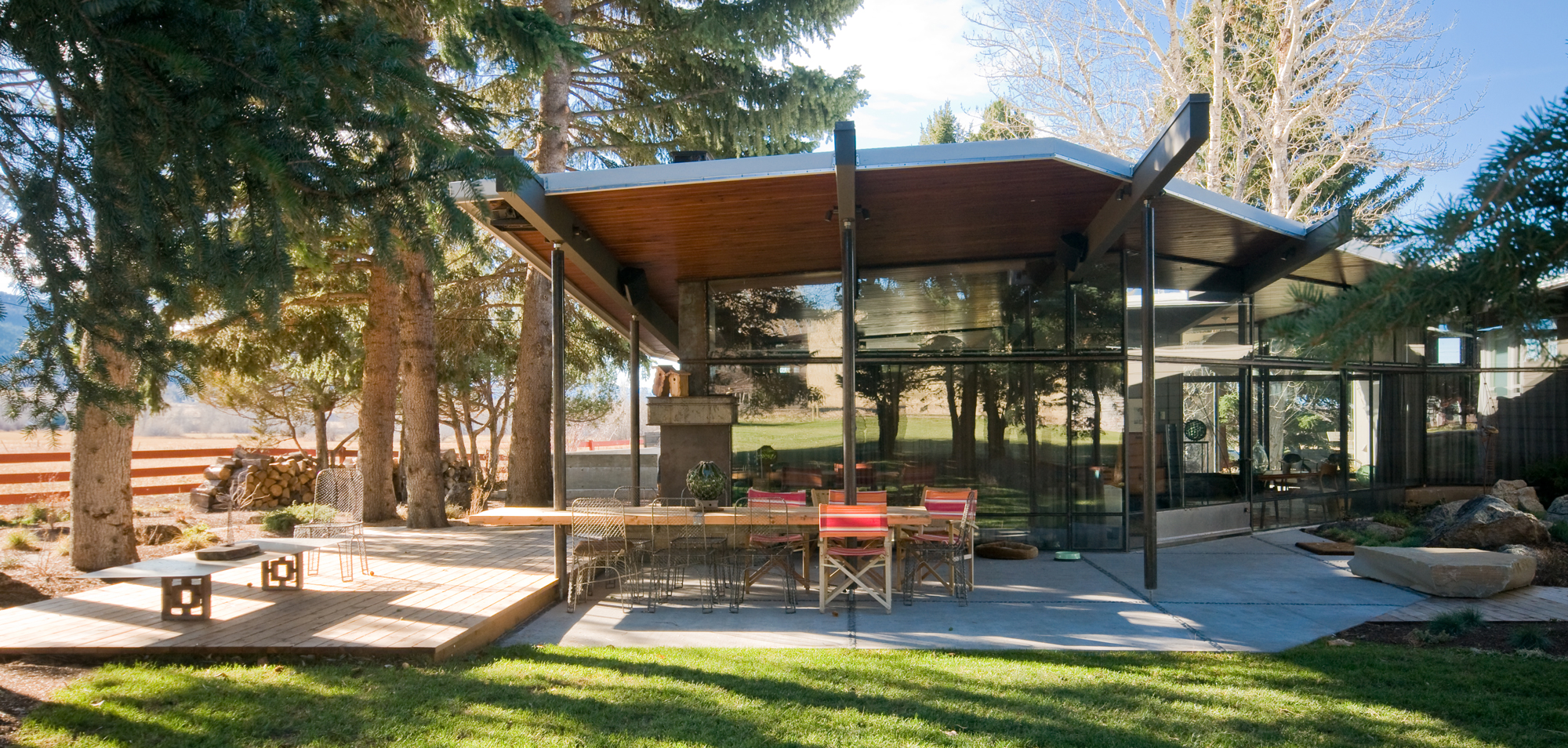
23 Jul Mountain Modern
ARCHITECT LARRY PEARSON IS BEST KNOWN for his rustic, slope-side mountain homes composed of rough-hewn timbers, locally quarried stone and original artisanal woodwork. The fact that Pearson’s own home is decidedly not rustic may seem odd at first, but when one learns more about the man behind the blueprint that his home is sleek and spare comes as no surprise. Glass, metal, concrete, and recycled materials make up the refurbished ‘50s home that Larry Pearson, CEO of the Pearson Design Group shares with his wife, Jennifer and their blended family.
Why would an architect, famous for his rugged domiciles, create a contemporary living space? According to Pearson, it’s not as far-fetched as one might think. The rustic homes for which he is known borrowed certain elements from turn-of-the-century log cabins. But Pearson is quick to remind friends and colleagues that authentic log cabins were actually quite plain. “There was a door — maybe two — a few windows, and that’s about it. There was no unnecessary ornamentation; log cabins were practical and void of anything extraneous. That kind of minimalist aesthetic really isn’t so different than that of a contemporary home,” he says. Additionally, Pearson grew up in California in a Joseph Eichler home (Eichler was a post-war real estate developer who was an advocate for modern architecture) so contemporary design is an innate part of Pearson’s aesthetic.
In addition to his respect for simplicity, Pearson — a graduate of the University of California, Santa Cruz — knows the fine bones of good design. So when he saw this particular house — designed by Berg Olsen, Dean of Architecture at Montana State University — things literally fell into place. The original home was built for Berg’s secretary and mistress. “I think she would like the fact that another architect now inhabits this home,” says Larry.
His California background, his keen eye for good design combined with over two decades in the magnificent — but often harsh — landscape of the West, resulted in a very personal home. “I kept the original footprint, tripled the square footage, and maintained a sense of ‘50s style while upgrading the basics and adding elements my family wanted and needed. Neither Jennifer nor I like to feel hemmed in, so we substituted glass partitions instead of traditional walls in the hub of the home”, he adds. The result is a flooding of natural light and a formidable sense of being outside — safe from the elements—while enjoying the dramatic views that often change minute by minute. Pivoting floor-to-ceiling glass doors were carefully planned to allow plenty of cross ventilation throughout the house. With translucent window treatment pulled aside, watching the day dissolve into night and back again is like being outside — without being subjected to the harsh Montana climate.
The tired cliché about ‘bringing the outdoors inside is true in this case, but the reverse is also true: Pearson thoughtfully created what he calls “multiple outdoor experiences”: areas for enjoying sunny winter afternoons and cool summer evenings. These outdoor entertaining areas provide year-round enjoyment for Pearson’s family and friends.
“When an architect inherits an existing structure it’s an exciting challenge to keep the best of what’s already there and add elements needed for one’s own lifestyle,” says Pearson, “It’s important to have respect for what has been done before then carefully consider what to add or subtract. While the Pearsons wanted to keep the footprint of the original home, they wanted to incorporate ecological elements. Passive solar energy — absorbed and radiated for indoor and outdoor comfort in the cold winter months — was a primary source of interest. Bozeman has a long, harsh winter, but it also boasts about 300 days of sunshine. So, Pearson saw an opportunity to “heat” the outside as well as the inside. “Why not create a home that absorbed all that natural light for outdoor comfort in the cold winter months?
So, Pearson placed the various patios and outdoor rooms so that they would borrow the midday sun and redistribute it over an extended period of time. The front courtyard — with a fire pit, hot tub and plenty of space for lounging, reading and sunning — is Jennifer’s favorite outdoor room. There, she tends to her succulents and relaxes after her daily morning run.
During the renovation conservation and ecological concerns were two of our top priorities. “The ultimate in recycling is the redevelopment of an existing home,” says Pearson. Concrete floors with radiant heat throughout the house, and passive solar energy keep the home cozy in winter. When asked about air conditioning, Pearson replied, “ We don’t need it. The doors and windows were thoughtfully placed to allow for as much cross ventilation as possible.” Montana summers can be hot, so Pearson built a berm, thus insulating the lower level where the bedrooms are located from summer’s heat.
In addition to the main home, the property — set on 4 acres of easement protected land — includes a guesthouse, greenhouse, and a barn which the Pearson’s turned into a workshop (with south-facing solar panels) for Jennifer’s recycled glass business, Glassroots of Montana. Her magnificent tile work can be found throughout the house. The business is now her hobby, an expression of her concern for conservation and her appreciation for beauty.
In the end, the Pearson’s got the dream house they wanted, and it just happens to fit in nicely with changing economic times. “Although they can be spectacular, we didn’t see any reason to build a massive, mountain-top house,” says Larry. “We wanted our home to be intimate, human-scaled. We wanted to create environments that bring people together.”
- The dining room opens up to the adjacent kitchen for easy flow; sofa banquette by Mitchell Gold + Bob Williams, custom walnut dining table by Rick Roberts of Archweld, Danish; modern rosewood chair
- Patio dining is enhanced by a table made from one slab of wood and wire mesh chairs that create a sense of transparency allowing for unobstructed views; also in this photo: in the far right, three-legged lounge chairs are by Don Harding.
- Gathering under an umbrella of trees and a view of the barn beg for parties en plein air. the dining table and “chairs” made of tree stumps add to the charm of this outdoor room.
- Inside and out, the continuously changing light and wather if Bozeman is ever present. A vintage rosewood console table and eye-catching rug are two of the Pearson’s favorite pieces. Larry’s steel and glass pivoting door allows easy entry and exit plus pl
- A casual dining area at the counter faces the kitchen (with eucalyptus cabinets); walnut stools from Bottega Montana.
- Patio dining is enhanced by a table made from one slab of wood and wire mesh chairs that create a sense of transparency allowing for unobstructed views; also in this photo: in the far right, three-legged lounge chairs are by Don Harding.





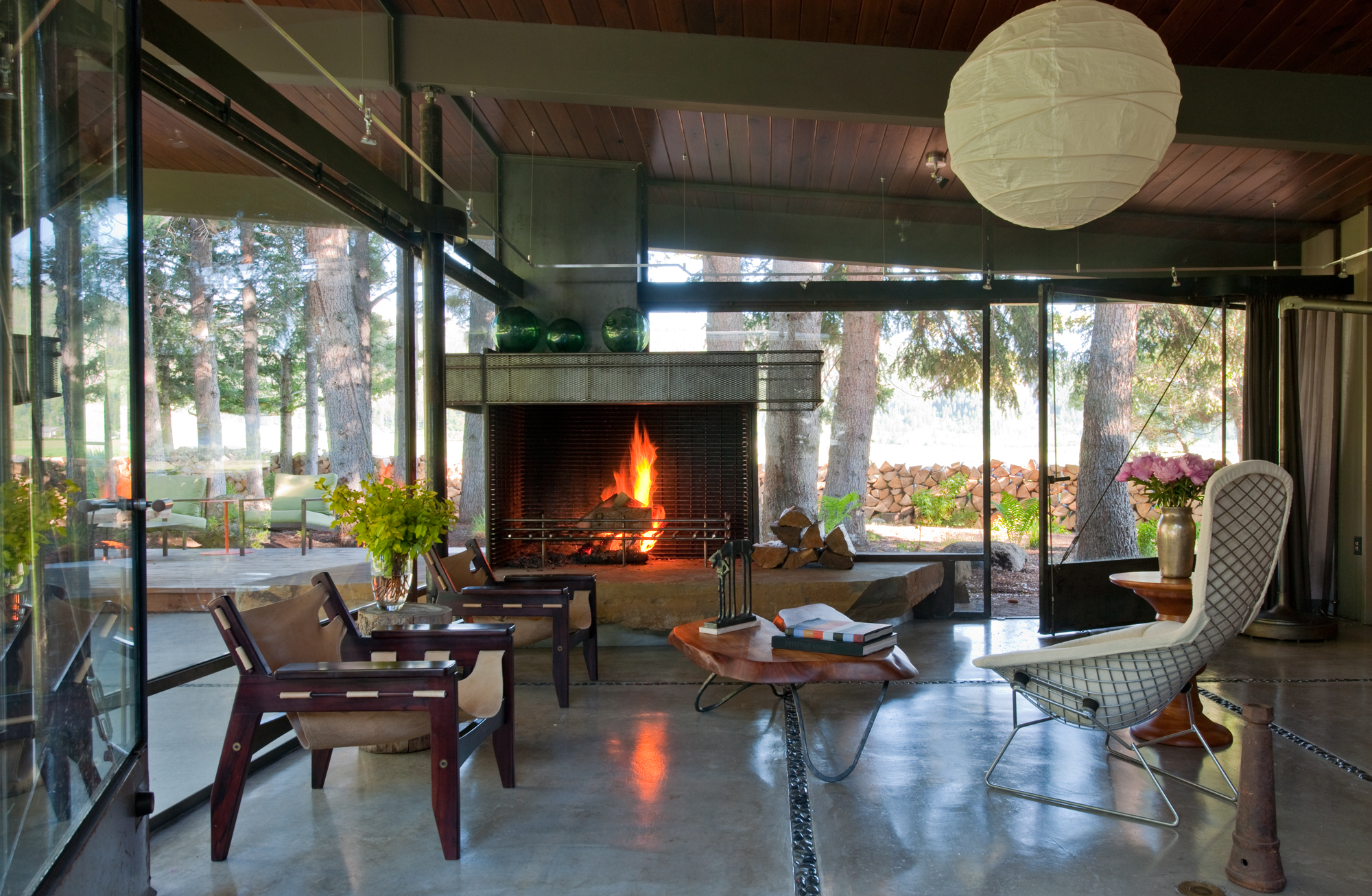
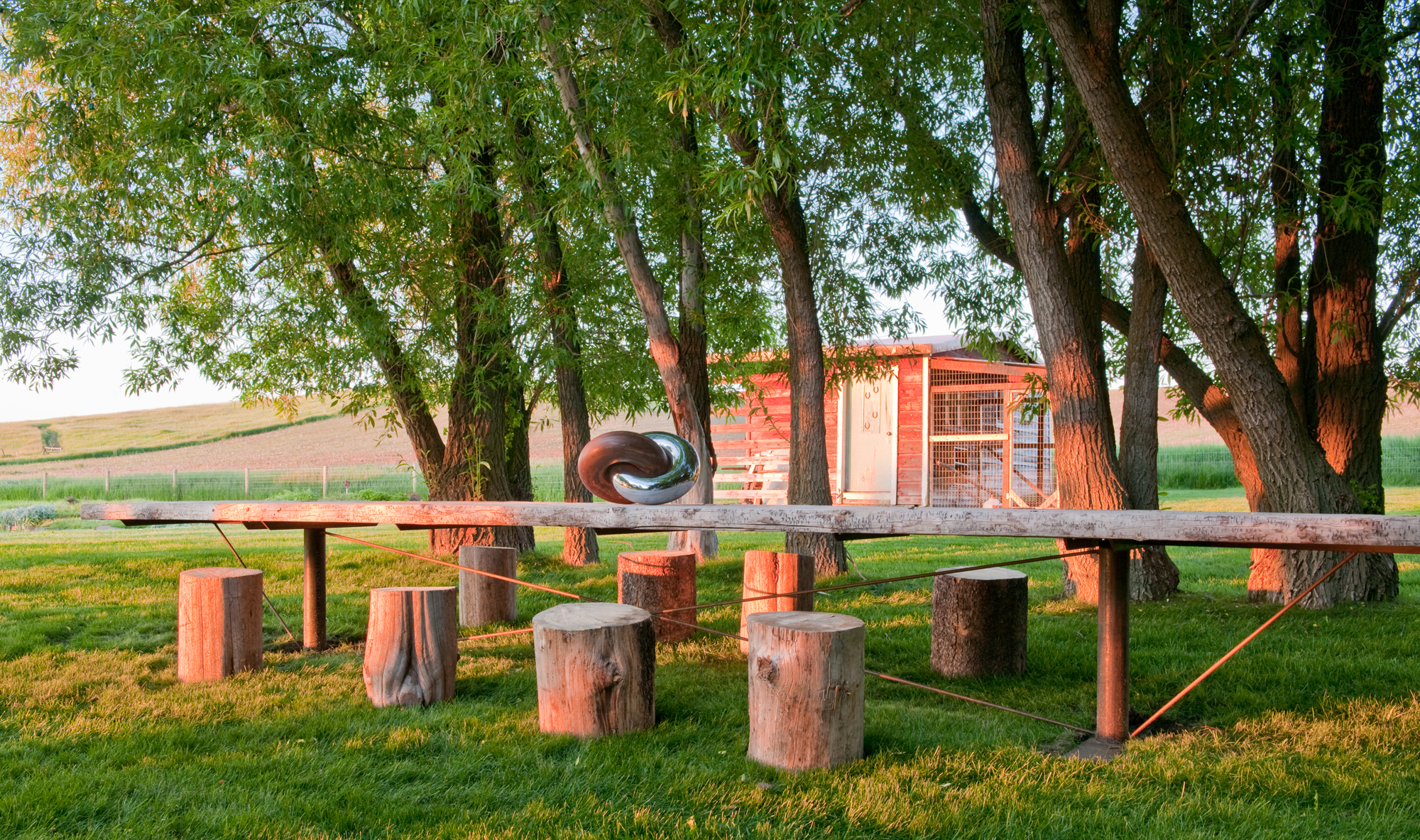
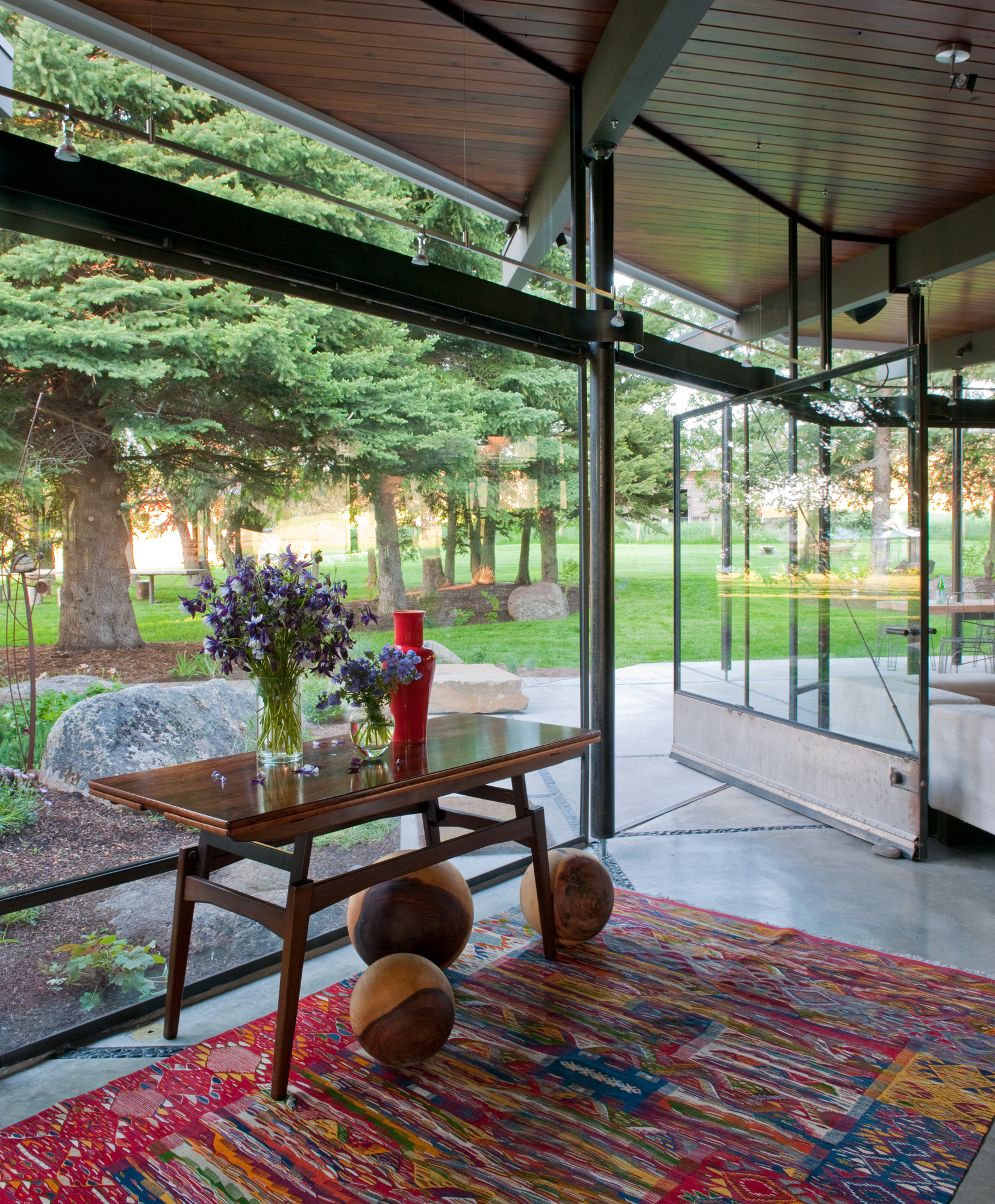
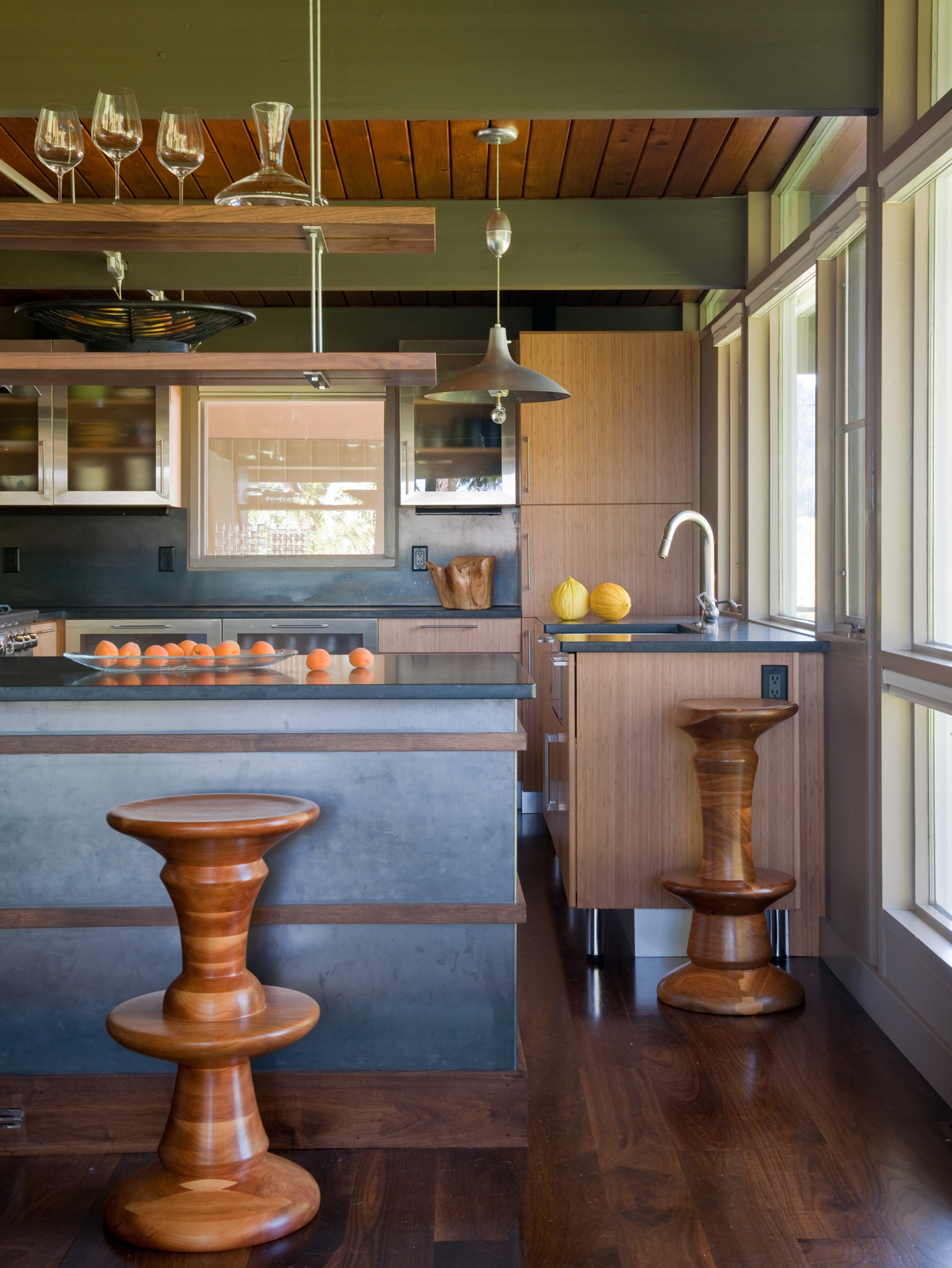

No Comments